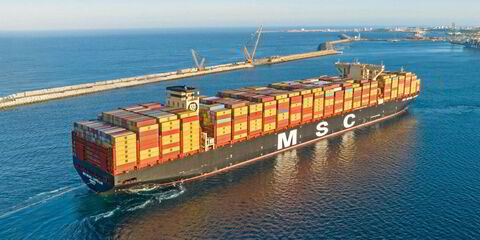Decarbonisation of the shipping industry requires green fuels at scales not available and costs not affordable today. Shipping needs to deploy 5% green fuels by 2030 to align with the trajectory of the Paris Agreement on climate change. This translates to approximately 40m tonnes of green ammonia or green methanol.
This article is part of a series written by people across shipping in response to this question about how to deploy a hypothetical TradeWinds Sustainable Shipping Fund:
How, where and why would you invest $1bn for the best return in sustainable shipping, as the industry grapples with the need to cut carbon emissions, improve efficiency and keep cargoes moving in a world facing multiple economic and political challenges? The investment will be made now and ideally held for the next seven years to the end of the decade. As an added bonus, give one policy or regulation you would like to implement from 1 January 2023 to benefit shipping?
Today, only half that ammonia is being traded by ships each year. The most recent report from the International Renewable Energy Agency also projects that green ammonia production will be at 15m tonnes by 2030 — a far cry from what is needed to satisfy shipping’s fractional green-fuels target.
Compounding this scaling challenge is the lack of robust supply chains and infrastructure to support the distribution of green fuels. This is why 80% of the estimated $3.4trn for decarbonising shipping needs to be invested in land infrastructure.
At the Global Centre for Maritime Decarbonisation (GCMD), we are uniquely positioned to identify and address technical and operational gaps that hinder green-fuels deployment. Safety is at the forefront of our minds when it comes to ammonia. With safety and operations guidelines and a competency framework articulated, bunkering pilots will take place in the new year.
If GCMD had $1bn to deploy today, we would leverage some of it to accelerate demonstrations of ammonia bunkering under commercial conditions. We would use a yet larger portion of it to crowd-in additional resources to build the first storage terminals and bunkering facilities. And we would use this pot of funds to co-support curriculum and standards development for the training of seafarers so they can handle future fuels safely and responsibly.
Investments are also needed to spur wider adoption of energy-savings solutions and close the cost gap for deploying biofuels in the interim. Importantly, we would make such catalytic funding equally available to first movers and small and medium-sized enterprises that arguably need them most to navigate the energy transition. The more we can do to collectively shave emissions today, the cheaper and sooner the sector can decarbonise.
Underpinning emissions control is emissions tracking. At GCMD, we would like to see in the new year regulatory frameworks that encourage accurate measurement and monitoring of greenhouse gas emissions.
To the extent possible, these frameworks should consider emissions on a lifecycle basis so that upstream and embedded emissions are accounted for. These regulations would form the bedrock of and increase stakeholder confidence in the implementation of any global carbon-pricing schemes to come.




